All hail the 20 years and 20 albums of John Dwyer’s Oh Sees/OCS/Thee Oh Sees
On to the next one
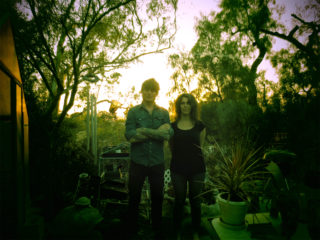
On to the next one
“I think I’m going to move on to a funk metal band next,” deadpans John Dwyer out of nowhere. “I mean, I have no problem with garage rock, but I think it’s time I distance myself with a funk metal opus.”
And then, just like that, our fairly straightforward conversation careens off on a random tangent as we both start reminiscing about the ’90s and when it seemed like the whole world was hooked on the Red Hot Chili Peppers. “We called ‘em the Chili Peps’ down here, bro,” he says, setting me straight. “I really liked them when I was young – those first two records, when they were super fucking grungy. Like, those guys and Faith No More, I was into all that shit. Even Guns n’ Roses for Christ’s sake, I was like, holy shit, ‘Welcome to the Jungle’, that guy is a fucking animal. I can’t believe I once stared at Axl Rose and was like: ‘awesome…’”
Spending 45 minutes talking with John Dwyer, it becomes immediately clear that the Oh Sees singer and driving force loves music to a level that is comparable to how most people feel about body parts. Growing up among the post-industrial sprawl of Providence, Rhode Island, Dwyer has lived by the Californian coast for a little over two decades. As such, he’s caught between two worlds. The 42-year-old has what I can only really describe as ‘laid-back intensity’, his clipped East Coast accent masking a typical, easy-going West Coast attitude. As we talk, we roll through a kaleidoscope of different topics from Rolling Stone bootlegs to the joys of Los Angeles mini-malls and recording a record on the sly in a San Francisco guitar shop.
In some ways, our wide-ranging conversation is a mirror to Dwyer’s magpie-like musical output. Starting off as one half of Pink and Brown, a chaotic, noise punk act that he worked on with fellow multi-instrumentalist Jeffrey Rosenberg, Dwyer’s music has since exploded in every direction possible. He’s done stripped down, Stooges-like proto-punk with Coachwhips. He’s done Liars style jazz-punk with The Hospitals and, more recently, Swords and Sandals. He’s even done weird, excessively macho fake-German industrial with the slightly controversial Zeigenbock Kopf. And that’s without counting his various solo projects and flights of fancy. To cut a long story short, let’s just say that it would take you a considerable amount of time, money and effort to track down every piece of music he’s appeared on.
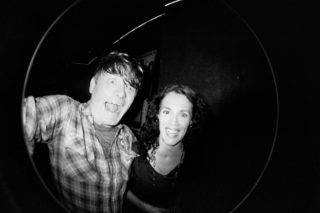
These days though, Dwyer mostly confines his efforts to two main projects: Damaged Bug, his arthouse solo project and the Oh Sees, the closest thing he has to a constant gig. Going by many names over the years, including Thee Oh Sees, OCS, Orinoka Crash Suite, Orange County Sound and any one of a number of other acronyms that John has decided seemingly on a whim, Oh Sees (sometimes with a ‘The’ or ‘Thee’) have gone from a side project to one of the cornerstone bands of the modern garage/psych rock resurgence. Although the music has morphed over the years from quietly strange freak folk on early albums like ‘1’,’ 2’, and ‘3 and 4’ to the primal, elemental psych rock the band are better known for today, the Oh Sees have informed and inspired a legion of followers with their love of obscure psychedelia and free-wheeling improvisations.
2017 is a landmark year for the project, as, for as far as anyone can tell, it marks both its twentieth anniversary and the release of albums nineteen and twenty. Although, like everyone else, Dwyer isn’t all that sure on the exact numbers. “I’ve had to do my due diligence just to check, but it has actually been twenty years pretty much,” he tells me as we try to piece all the evidence together. “We’ve put out more than twenty releases, but this is definitely our twentieth combo LP, not counting the singles and what not. It has just been dumb luck, y’know. We’ve never tried to do, like, one a year or anything like that, I mean, I’d do five a year if I could.”
I ask him how he thinks the Oh Sees have managed to survive where other projects have eventually fallen by the wayside. “Well, we’ve never given a fuck about what people want,” he says. “That’s why I put out, like, eleven records a year. I’m like, fuck the critics if they can’t deal with us. We don’t even pay that much attention to the fans, we just get up there and play what feels right to us. I’ve always kept the band changing by using innovation from other people. I think our writing style has grown and mutated over the years. Certain records, I’ve gone into it with an idea of how I wanted it to be written – like, shall I write it from improvisation? Shall I write it from the perspective of myself? But mostly I’ve just been changing when the wind strikes me. It’s not up to any rule or anything like that.”
As you’re probably realising by now, Dwyer likes to move fast. He takes great pains to stack the band with musicians that can hack the pace and that he can bounce ideas off. Nevertheless, the Oh Sees have burned through quite a few members over the years. The sheer relentlessness can be punishing; for example, when he made the move from San Francisco to Los Angeles in 2013, Dwyer decided to pause the band for a few months while his living situation was up in the air. When their then tour manager announced that the band was going on hiatus, it ignited fears that the Oh Sees was over. Dwyer is still bemused by the incident. “Sometimes I feel like every blog post of me saying shit is always something I didn’t actually say,” he says as we talk about the move. “Like, when I said the band was going on hiatus; I never actually said that – those words never came out of my mouth. Basically, it was the fourth time I was going to be evicted from a house I really enjoyed, so I thought, ‘fuck it, time to go.’”
The idea that anyone could think that Dwyer would stop seems strange looking back from the distance of five years. This is a guy who seems addicted to making music and he’s done all sorts of jobs from stacking groceries, working as a bike messenger, house painting and even a short stint as a handyman at a hip-hop club to feed his habit. “That sort of attitude comes from my hometown,” he explains when I ask him where this incredible work ethic comes from. “I’ve watched so many people where I grew up just do whatever the fuck they want in terms of art. There would be these kids who would work really hard to get onto an art course and they’d drop out right before they graduated being like, ‘I’m done.’ Like, they wouldn’t get their diploma, end up with all this debt and still manage to make it as an artist just by using their gut and inventiveness.”
New album ‘Orc’ feels a lot like an exercise in said inventiveness. Released back in August, the record represents another evolution for the band. With two drummers now a permanent fixture of Oh Sees, the album advances into unknown territory. It keeps the white-hot garage rock of the previous records and adds in flourishes of early heavy metal, prog and even some of the creepy art rock of Dwyer’s solo output. The result is fierce, unpredictable and wildly inventive, and sees the group firmly on their way to rock’s further reaches.
“With ‘Orc’ I just wanted it to be a heavy record,” Dwyer clarifies. “Not so much battleworthy, but I wanted it to have a heavy quality because that’s the way we were naturally headed. If there’s any innovation I think it’s mainly been down to everyone getting better at playing. It really is the mechanical result of ‘practice, practice, practice’. This record came out of a lot of sweat and grind; lots of loose improvisations that we’ve slowly screwed down.”
As well as throwing new influences into the fury, ‘Orc’ also sees the band stretching out their horizons in terms of pacing. One of the most interesting things about the record is that Oh Sees have even started to rip up their own rulebook, with songs like ‘Cooling Tower’ that veer into airy dream pop. “The original version was so very different to the one that ended up on the record,” Dwyer tells me. “It morphed a lot in the studio because I brought in a string player from El Paso. Once he started playing, it just really changed where the song was headed and I pulled out some other instruments I hadn’t used for a while. It ended up completely changing from start to finish, turning into that weird little ditty you have there.
“I think it’s a nice breathe of air in the album,” he adds. “You have to sort of come up for breath on that one as it’s a lot of long pieces and a lot of wild pieces. To be able to pop up for air is never a bad idea.”
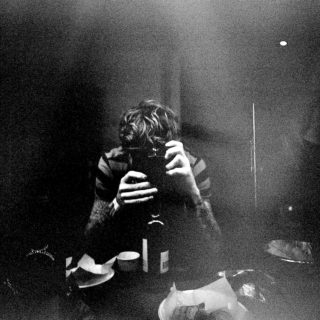
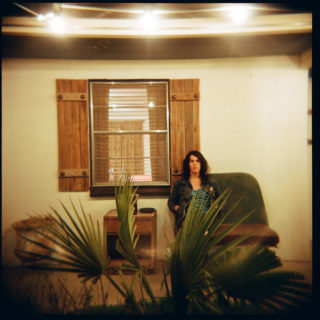
A few nights later, Brigid Dawson is eager to find out if I’d been watching the football. Born in the UK, with family spread around the South West and Birmingham, she’s excited to tell me that her old man is a die-hard Tottenham fan. “He took me to a game at White Hart Lane the last time I was over,” she says from her home just outside of San Francisco. “I loved it – it had such a similar vibe to a live show.”
Dawson and Dwyer’s relationship goes back to the earliest days of this project. They worked together on almost all of the band’s output up until 2013 (and again in 2015) and their onstage chemistry arguably helped make the band such a spectacle live. It’s almost strange to find out that this meeting of minds has utterly mundane beginnings. “John was my customer at the coffee shop – I worked around the corner from where he lived,” she tells me, picking up the story. “We were all neighbours, the whole band pretty much lived within a block of each other. I’d walk over to John’s house from the cafe where I worked at and his friend Kyle Ranson was his roommate then; he was a painting hero. It was all just happening there, y’know, and the whole of San Francisco felt like that, not just my little group of friends.”
One of the first things to grab you about Dawson and Dwyer is that they both seem to vibe off the energy of each other. Dawson puts it beautifully when she says “working with John means living your life at quite a fast pace. You’re informed by his really amazing East Coast, working class, work ethic. Everything John has, he’s earned and he works really hard at it.
“You have to be part of a well-oiled machine,” she continues. “His work ethic spurs you to have a great work ethic if you hadn’t got one already. I’ve been making a record with somebody else and the pace of it has been really different – there have been times where I didn’t know what to do with myself. I feel like working with John has kind of turned me into a 15-year-old boy in a way. If it’s not done in a week I don’t know if I have the wherewithal to see it through, although I usually do.”
The pair have reunited recently for the second of the Oh Sees 2017 releases, which also just so happens to be the band’s twentieth record ever. Due to hit the shelves in November, ‘Memory of a Cut Off Head’ sees the band returning both to its original OCS moniker and their quieter, more folk-informed roots. A co-production between Dawson and Dwyer, it’s a record that feels like a complete about-turn when compared to ‘Orc’. Gone are the wild improvisations and duelling drum kits, replaced by lush, stripped back acoustic arrangements that are sumptuous in texture, yet satisfyingly retain the gentle grace of the band’s early work. It’s both a re-examination of old times, a solemn meditation on the hectic pace of the last twenty years and perhaps even a respite from it. “After all, I’m a man in his 40s,” remarks Dwyer when the subject of the new record crops up. “It makes sense not to get shitfaced all the time.”
“This one has been a little bit different,” beams Dawson when I asked her about reconnecting with Dwyer. “For the first time, I’ve got my own songs on this album. So it’s a bit different from our old working relationship and it’s been really nice. It’s actually been really calm – the calmest experience I’ve had working with John. It’s been really easy – you fly down to LA, you play each other your songs and then work them out together. It has been way more relaxed actually than my previous ten years working with him. We all had jobs, we were all building this thing from scratch and touring as much as we could. This has been an utterly different experience. It’s been like hanging out as friends and making music together. We took our time on this one.”
“Yeah, it’s been cool,” agrees Dwyer. “It’s like a variation on the old setup, but it’s progressed. The older version of the OCS was extremely simple compared to the more recent stuff, but this time we’ve brought in more players, which adds a whole new dimension to the sound. So rather than having me butchering my way through a keyboard part, we’ve brought in some people who can actually play the harpsichord. I wanted it to sound good, but also pretty warm. I hate when things sound too perfect. I’m really, really about the little fuck ups that make a record sound human.”
This all begs the obvious question though – is ‘Memory of a Cut off Head’ a conscious call back to the Oh Sees original set up; a love letter to the simplicity of earlier times, as it were? Well, if it is, the pair aren’t admitting it. “It wasn’t until much later on that I realised that this was the 20th anniversary of OCS,” explains Dawson. “I don’t think there was a plan, we were just doing what we do. You have to keep things fresh and keep inspired, but you also have to keep things moving forward. It’s just that with this one, that just so happened to reach back to something that was in the past as well.”
Keeping things fresh is what the Oh Sees is all about. Both the band and Castle Face – the equally prolific label Dwyer runs with his partners Matt Jones and Brian Lee Hughes – are determined to keep their musical horizons as broad as possible. “We’ve been pigeonholed very hardcore into the garage rock scene here,” Dwyer tells me as we talk about his future projects. “But, y’know, we always trying to branch out all the damn time – we have books coming out again next year. More electronic stuff and more, like, odd stuff.” Whatever happens next, Thee Oh Sees, Oh Sees, OCS or whatever they feel like calling themselves will continue to simultaneously push the envelope while flummoxing and inspiring a generation of fans, musicians and critics along the way, ultimately by being so incredibly self-sufficient.
I ask Dawson how it feels to be in a band that is considered the mothership of the post-millennial garage scene. “Are we even garage rock?” she shoots back almost instantly. “I suppose we do have that vibe, because we all love that kind of stuff collectively, but I think the influences come from a lot of other places too. When you say it to me now, I think of a bunch of bros. It doesn’t really grab me, y’know…”
Yeah, but you can’t deny that a lot of garage bands have been inspired by your music though, I say.
“That’s true,” she counters. “Sometimes I hear things when I’m out and about and I know it’s not us, but it sounds like us, which is so strange. But that’s the way music works, y’know, you fall in love with music and then you do your very best to write something on par with the thing you love. Of course, it often comes out completely different, but it will have shades of that old thing that you love. I suppose that’s what garage rock is now – it’s a conversation with all the other bands that are doing that kind of stuff.”
3 albums to start a new obsession with this enduring, evolving group
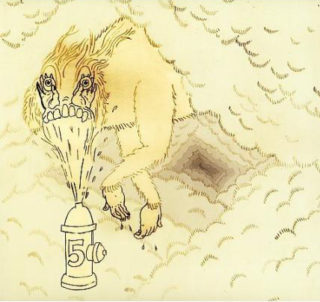 OCS – Cool Death of Island Raiders
OCS – Cool Death of Island Raiders
Narnack Records, 2006
This might sound a little hard to believe, but for a band with such a hard-rocking reputation, Dwyer originally intended OCS to be a much softer and altogether stranger project than the one it became known as. Slightly misunderstood at the time, ‘Island Raiders’ is a surprisingly laid-back affair, with gentle freak-folk melodies and tender-hearted, almost cutesy vocals.
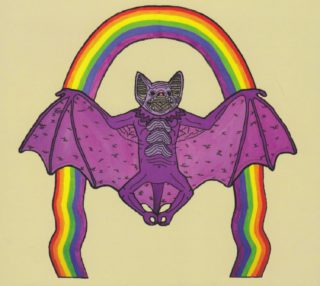
Thee Oh Sees – Help
In The Red, 2009
If there is such a thing as a quintessential Oh Sees record, then ‘Help’ is it. Although technically their eighth studio album, it was only the band’s second record under ‘Thee Oh Sees’ and it basically forms a blueprint for the Cramps-meets-Jefferson Airplane sound John Dwyer and company have perfected since. Dialling back the free improvisation of the earlier records, songs like ‘Rainbows’ and ‘Meat Step Lively’ are taut, riff-chugging freak-outs.
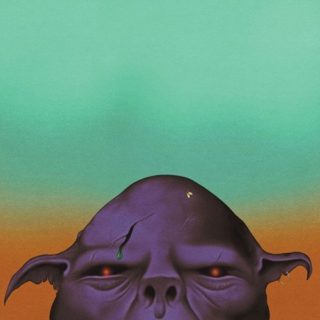 Oh Sees – Orc
Oh Sees – Orc
Castle Face 2017
Back in 2013, Dwyer dissolved the long-running Petey Dammit, Brigid Dawson, Mike Shoun version of the Oh Sees. Since then, the band has been slowly transcending into rock’s furthest reaches, reintroducing the experimentation and extended jam sessions that make the band’s live shows so legendary. ‘Orc’ is the latest postcard from their travels and adds even more ingredients into the formula, from free-form Afro-jazz on ‘Raw Optics’ to the breezy, almost Ratatat-like dream-pop of ‘Cooling Tower’.